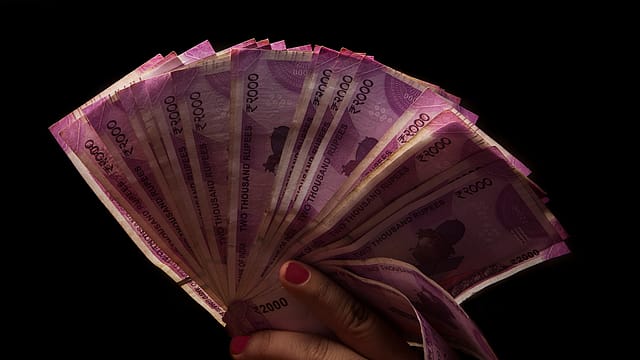₹2,000 note withdrawal ‘non-event’; favourable impact on liquidity: SBI
ADVERTISEMENT

The impact of ₹2,000 note withdrawal is a "non-event", and there will be a "favorable impact" on liquidity, bank deposits, and interest rates, State Bank of India's (SBI) research wing has said in its latest 'Ecowrap' report.
The central bank last Friday announced the withdrawal of ₹2,000 denomination banknote but said it will continue to remain a “legal tender” before it is phased out in a time-bound manner. To complete the exercise in a timely manner and to provide adequate time to people, all banks have been asked to provide a deposit or exchange facility for ₹2,000 banknotes until September 30, 2023.
The SBI analysis shows banks will already be holding some of these notes (₹2,000) in their currency chests, and that the impact on deposits will be limited. "We believe that almost the entire amount of ₹3.6 trillion (lakh crore) will come back (~ ₹3 trillion excluding the amount in currency chests) to the banking system," says the SBI report.
Assuming that 10-15% of the total ₹2,000 notes are in currency chests. “Of the remaining ₹3 lakh crore, if we assume MPC of 0.7, ₹2-2.1 trillion (lakh crore) would be spent by the consumers (either direct purchase or by exchanging it with smaller denominations notes), approximately ₹1 trillion (lakh crore) is destined deposits in banks."
January 2026
Netflix, which has been in India for a decade, has successfully struck a balance between high-class premium content and pricing that attracts a range of customers. Find out how the U.S. streaming giant evolved in India, plus an exclusive interview with CEO Ted Sarandos. Also read about the Best Investments for 2026, and how rising growth and easing inflation will come in handy for finance minister Nirmala Sitharaman as she prepares Budget 2026.
Moreover, the balance of payment surplus in FY24 is expected to the tune of $1.5-2 billion, thus providing further liquidity support, it adds.
The report says cash withdrawal through debit cards at ATMs has declined significantly in India, thus ceding way to an unprecedented rise in UPI use.
Based on monthly time series data analysis for April 2016 to April 2023, the report reveals that "every Re 1 increase in the value of UPI transactions leads to 18 paisa decline in debit card transactions, indicating a person is now making a visit to ATM on an average 8 times a year, down from 16 visits earlier".
It says India has seen new milestones, in both value and volume terms, in digital payments, indicating the robustness of its payment ecosystem and acceptance by a wide stratum of consumers.
In volume term, the UPI transactions have increased from 1.8 crore in FY17 to 8,375 crore in FY23, shows the official data. The value of UPI transactions has also increased handsomely from just ₹6,947 crore to ₹139 lakh crore during the same period, a jump of 2004 times, shows the data.
"Rural and Semi-Urban areas are now accounting for 60% of share in UPI value/volume, dismantling the popular perception that metro/urban areas are hotbeds of digital payment adoption and innovations," the SBI says.
UPI, adds the report, has not only altered the "payment landscape of India but is also significantly altering the purpose for which currency is used, hitherto acting as an investment to speculation (trading) conduit".
Interestingly, cash in currency has also moderated to reach 12.4% of GDP in FY23, almost the same level as 2015-16. The yearly growth in cash in currency has also declined to 7.9% in FY23 from 16.6% in FY21.
